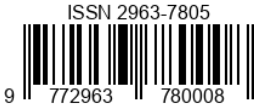Optimalisasi Efesiensi Bisnis Organisasi Melalui Pemanfaatan Sistem Dan Teknologi Informasi
DOI:
https://doi.org/10.55606/jtmei.v2i4.3130Keywords:
Information Systems, Information Technology, Use Of TechnologyAbstract
The use of information systems and technology has become a central element in efforts to increase business efficiency in today's organizational environment. Organizations must understand that operational efficiency is a very valuable asset in achieving their business goals. By wisely utilizing information systems and technology, you can automate business processes, increase access to information, improve internal communications, and make effective decision making easier. This research aims to explain how the use of information systems and technology can be optimized to increase organizational business efficiency.
Downloads
References
O'Brien, J. A., & Marakas, G. M. (2019). Pengelolaan Sistem Informasi: Menciptakan Nilai Bisnis Melalui Teknologi Informasi. Penerbit Salemba Empat
Turban, E., Leidner, D., McLean, E., & Wetherbe, J. (2018). Teknologi Informasi untuk Manajemen: Memecahkan Masalah Bisnis dan Menciptakan Nilai. Penerbit Prenhallindo.
Laudon, K. C., & Laudon, J. P. (2020). Sistem Informasi Manajemen: Menciptakan Keunggulan Bersaing dalam Bisnis. Penerbit Salemba Empat.
O'Hara, Margaret; Watson, Richard; Cavan, Bruce (1999). "Managing the three levels of change".Information Systems Management. 16 (3): 64.
Muntean, M., Muntean, C., & Dinu, R. (2018). The Role of Information Technology in Increasing Business Efficiency. In Information Technology and Systems (pp. 175-186). Springer.
Downloads
Published
How to Cite
Issue
Section
License
Copyright (c) 2023 Jurnal Teknik Mesin, Industri, Elektro dan Informatika

This work is licensed under a Creative Commons Attribution-NonCommercial-ShareAlike 4.0 International License.








